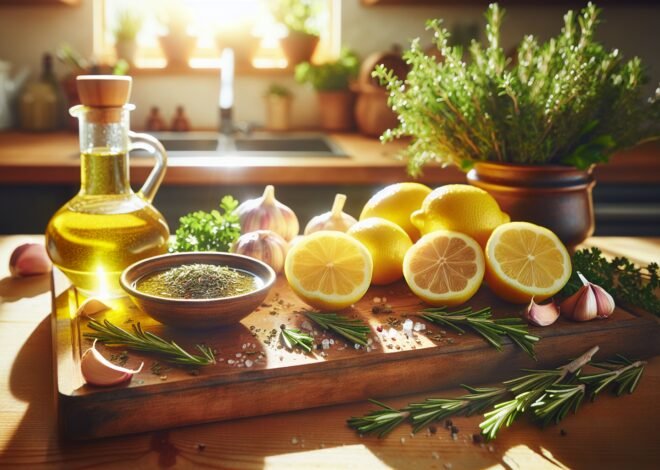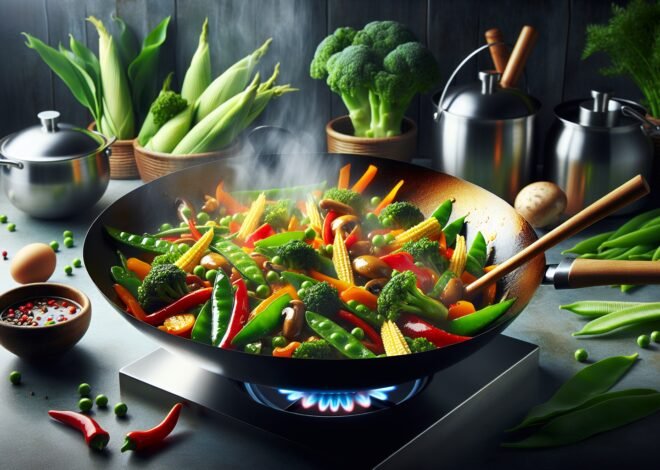
How to Make a Traditional Romesco Sauce
Make romesco sauce a staple in your kitchen by mastering this traditional Spanish delight. Thought to have originated in Catalonia, romesco sauce combines roasted red peppers, tomatoes, nuts, and spices, creating a dynamic and flavorful accompaniment to various dishes. Perfectly balancing sweet, smoky, and nutty flavors, it’s not just a condiment but an enhancement to grilled vegetables, seafood, or meats. This guide will walk you through creating an authentic romesco sauce, ensuring you capture its unique taste and versatility. Dive in to discover how these simple ingredients transform into a complex, irresistible dressing.
Understanding Romesco Sauce
Romesco sauce, a versatile and flavorful addition to any dish, offers a rich tapestry of history and flavor. This Spanish sauce, known for its bold, earthy flavors and vibrant color, has captured the hearts and palates of food lovers around the globe. Let’s dive into the origins, traditional ingredients, and regional variations that make Romesco sauce a beloved culinary treasure.
History and Origins of Romesco Sauce
The origins of Romesco sauce trace back to the sunny region of Catalonia in northeastern Spain. Traditionally, fishermen along the Tarragona coast crafted this sauce to enhance their daily catch. Over time, Romesco evolved from a staple of coastal cuisine into a beloved condiment throughout Spain and beyond. Its use spread as traders and travelers introduced it to new cultures, adding to its popularity.
Historically, Romesco sauce has been linked to the religious festivals of Catalonia, where it was often served with grilled calçots, a type of green onion native to the region. This connection to communal celebrations helped cement its place as a symbol of Catalan hospitality and culinary tradition. Today, it remains a cherished accompaniment in both traditional and modern Spanish dishes.
Traditional Ingredients and Flavors in Romesco Sauce
Romesco sauce is celebrated for its bold and robust flavors, achieved through a blend of simple, yet distinctive ingredients. The traditional base includes roasted red peppers and tomatoes, which provide its signature vibrant color and a sweet, smoky undertone. Adding depth and texture, almonds or hazelnuts are incorporated, lending a rich, nutty flavor to the sauce.
Garlic and olive oil are foundational components, enhancing the richness and providing a smooth consistency. A hint of vinegar cuts through the richness, offering a tangy balance. Finally, a pinch of salt and a dash of smoked paprika bring the flavors together, adding warmth and complexity.
The careful balance of these ingredients creates a sauce that is at once savory, sweet, and slightly smoky. Each bite evokes the sun-soaked lands of Catalonia, making it a perfect accompaniment to a variety of dishes.
Regional Variations of Romesco Sauce Recipes
Though the traditional Catalan Romesco sauce remains popular, regional variations have emerged throughout Spain and neighboring regions. These adaptations often reflect local ingredients and culinary preferences, adding unique twists to the classic recipe.
In some regions, chefs might incorporate dried ñora peppers, a type of Spanish pepper, instead of roasted red peppers, offering a different heat profile. Others may blend in different nuts, such as walnuts or pine nuts, to vary the sauce’s texture and flavor. Additionally, some recipes include breadcrumbs to thicken the sauce, providing a slightly different mouthfeel.
In the coastal areas, Romesco is often paired with seafood, while inland variations might focus on pairing it with meats or vegetables. These regional adaptations showcase the versatility of Romesco sauce and its ability to complement a wide range of flavors and dishes.
How to Prepare a Classic Romesco Sauce
Creating a classic Romesco sauce at home is an enjoyable and rewarding culinary endeavor. With simple, fresh ingredients, you can craft a sauce that brings the authentic taste of Catalonia to your kitchen. Follow these steps to master the art of making Romesco sauce, and avoid common pitfalls along the way.
Step-by-Step Romesco Sauce Recipe Instructions
To prepare Romesco sauce, gather the following ingredients:
- 2 roasted red peppers, peeled
- 2 ripe tomatoes, roasted and peeled
- 1/2 cup toasted almonds or hazelnuts
- 3 cloves garlic, peeled
- 1/4 cup extra-virgin olive oil
- 2 tablespoons sherry vinegar
- 1 teaspoon smoked paprika
- Salt to taste
Instructions:
- Roast the Vegetables: Begin by roasting the red peppers and tomatoes until their skins blister and blacken. Once cooled, peel the skins and remove any seeds.
- Toast the Nuts: In a dry skillet, toast the almonds or hazelnuts over medium heat until golden and fragrant. Allow them to cool slightly.
- Blend the Ingredients: In a food processor, combine the roasted peppers, tomatoes, toasted nuts, garlic cloves, olive oil, sherry vinegar, smoked paprika, and salt. Blend until smooth and well combined.
- Adjust Consistency: If the sauce is too thick, add a little more olive oil or vinegar to achieve the desired consistency.
- Taste and Season: Taste the sauce and adjust the seasoning with salt or additional vinegar if necessary.
Common Mistakes to Avoid When Making Romesco Sauce
Mistakes can happen, but a few simple tips can help you avoid them and achieve a perfect Romesco sauce:
- Skipping the Roasting Process: Roasting the peppers and tomatoes is crucial for developing the sauce’s smoky flavor. Skipping this step can result in a bland sauce.
- Over-toasting the Nuts: Nuts can burn quickly, so keep a close eye on them while toasting to avoid bitterness.
- Ignoring the Vinegar Balance: The right amount of vinegar is key. Too much can overpower the sauce, while too little may leave it tasting flat.
- Using Stale Nuts: Fresh nuts offer the best flavor. Stale or rancid nuts can ruin the taste of the sauce.
Tips for Perfecting Homemade Romesco Sauce
Creating the perfect Romesco sauce requires attention to detail and a few expert tips:
- Choose Quality Ingredients: Fresh, high-quality ingredients make a significant difference in flavor. Select ripe tomatoes and fresh nuts for the best results.
- Experiment with Nuts: Try different nuts like cashews or walnuts for a unique twist on the classic recipe.
- Adjust Heat Levels: If you prefer a spicier sauce, add a pinch of cayenne pepper or a small chili pepper to the mix.
- Use a Mortar and Pestle: For a more authentic texture, consider using a mortar and pestle instead of a food processor.
- Let the Flavors Marry: Allow the sauce to rest for a few hours in the fridge before serving. This enhances the flavors and creates a more harmonious taste.
Serving and Storing Romesco Sauce
Romesco sauce is versatile and can enhance a wide array of dishes. Whether serving it as a dip, a topping, or a marinade, its rich flavor profile complements many foods. Discover the best pairings, storage tips, and inventive ways to use leftovers.
Dishes that Pair Well with Romesco Sauce
Romesco sauce is a delightful addition to numerous dishes, offering a burst of flavor and color. Here are some delicious pairings:
- Grilled Vegetables: Drizzle Romesco over charred vegetables like asparagus, zucchini, or eggplant for a smoky, savory delight.
- Seafood: Pair Romesco with grilled or baked fish, shrimp, or scallops. Its robust flavor enhances the natural sweetness of seafood.
- Meats: Complement roasted or grilled chicken, pork, or lamb with a dollop of Romesco for a flavorful finish.
- Pasta: Toss Romesco sauce with your favorite pasta for a quick, flavorful meal. Add some Parmesan cheese and fresh basil for an extra layer of taste.
- Bread and Tapas: Serve Romesco as a dip with crusty bread or as part of a tapas spread with olives, cheeses, and cured meats.
How to Store Romesco Sauce for Maximum Freshness
Proper storage ensures that your Romesco sauce retains its flavor and freshness. Follow these tips:
- Refrigeration: Store the sauce in an airtight container in the refrigerator. It will stay fresh for up to a week.
- Freezing: For longer storage, freeze Romesco sauce in ice cube trays or small containers. Thaw in the refrigerator before use.
- Avoid Contamination: Use clean utensils when scooping out the sauce to prevent cross-contamination and extend shelf life.
Creative Ways to Use Leftover Romesco Sauce
Leftover Romesco sauce can be a versatile kitchen asset. Here are some inventive ways to enjoy it:
- Eggs: Add a spoonful of Romesco to scrambled eggs or omelets for a burst of flavor.
- Sandwiches and Wraps: Spread Romesco on sandwiches or wraps as a flavorful replacement for mayonnaise or mustard.
- Pizza Topping: Use Romesco as a base for pizza instead of tomato sauce. Top with your favorite ingredients.
- Soup Enhancer: Stir a tablespoon of Romesco into soups or stews for added depth and complexity.
- Salad Dressing: Mix Romesco with a little extra olive oil and vinegar to create a rich, tangy salad dressing.
Romesco sauce, with its rich history and bold flavors, is a delightful addition to any kitchen. By understanding its origins and mastering its preparation, you can enjoy this versatile sauce in countless ways. Whether serving it with traditional dishes or experimenting with new creations, Romesco sauce is sure to enchant your taste buds.
Conclusion
Romesco sauce is a Spanish condiment made with roasted red peppers, tomatoes, almonds, and garlic, blended together. It often includes ingredients like olive oil, vinegar, and smoked paprika for additional flavor. Traditionally, the sauce is served with seafood, vegetables, or grilled meats. Its origins are in Catalonia, Spain, and it is known for its rich, smoky flavor profile. The sauce can be prepared in advance and stored in the refrigerator for several days.
FAQ
What are the key ingredients needed to make an authentic romesco sauce?
Authentic romesco sauce typically includes roasted red peppers, tomatoes, almonds, garlic, olive oil, and sherry vinegar. Adding paprika and cayenne pepper enhances its flavor, while bread provides the desired thickness.
How can I store homemade romesco sauce to maintain its freshness?
Store homemade romesco sauce in an airtight container in the refrigerator. It stays fresh for up to one week. For longer storage, freeze it in portions for up to three months.
What dishes pair well with traditional romesco sauce?
Traditional romesco sauce complements grilled meats, seafood, roasted vegetables, and pasta dishes. It’s also a popular dip for breads and raw vegetables.
Can romesco sauce be made vegan or gluten-free?
Romesco sauce can easily be made vegan by using plant-based ingredients. To make it gluten-free, use gluten-free bread or omit bread entirely, adjusting consistency with almonds or other nuts.
What is the best way to blend ingredients for a smooth romesco sauce?
Use a food processor or high-speed blender to achieve a smooth consistency. Gradually add olive oil while blending to emulsify the sauce, ensuring a rich, creamy texture.
How long does it take to prepare and cook romesco sauce from scratch?
Preparation and cooking time for romesco sauce is about 30 to 45 minutes. Roasting the peppers and tomatoes typically takes the most time, while blending and seasoning are quick steps.











